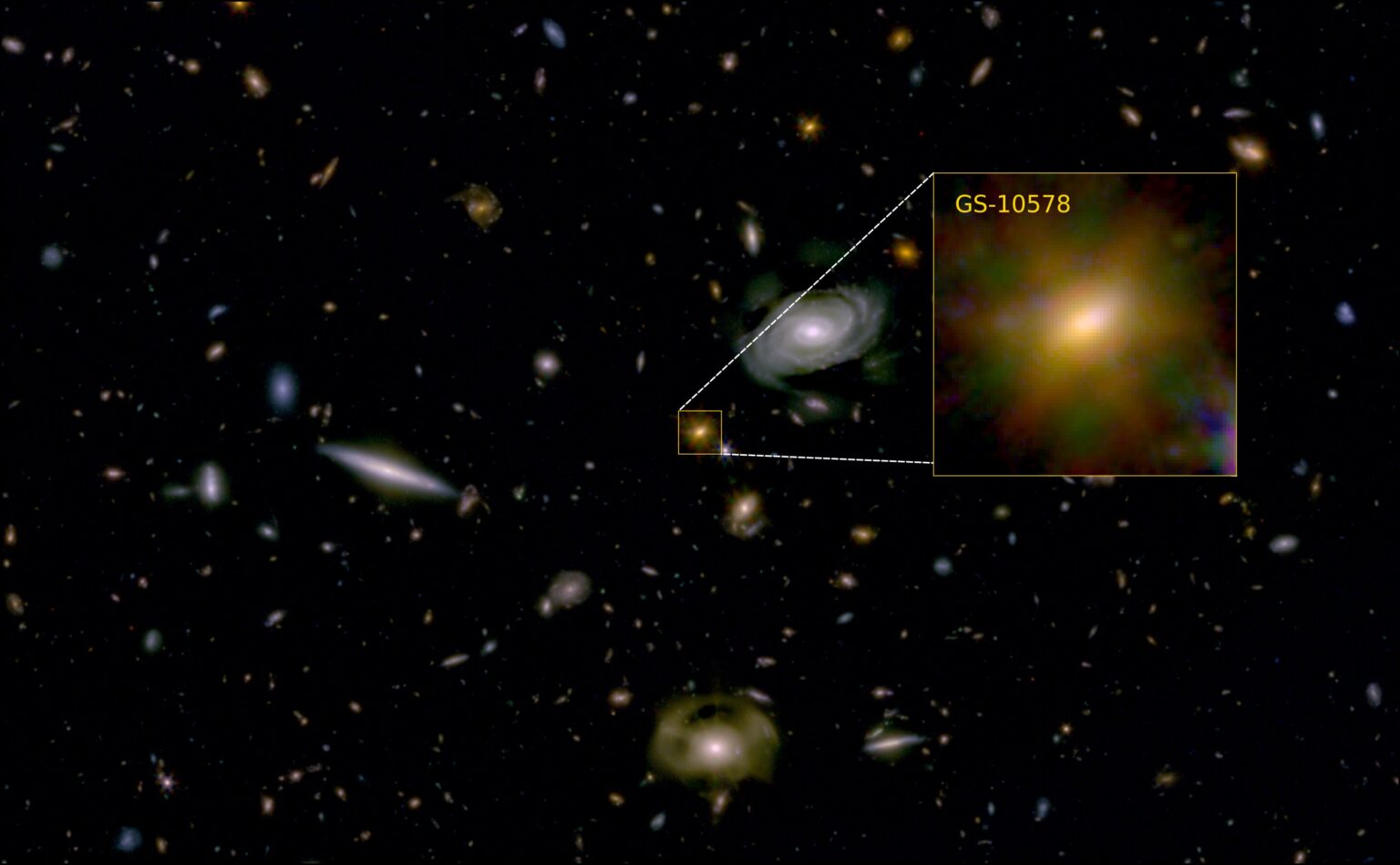Galaxy GS-10578, observed as it was about 2 billion years after the formation of the Universe, is too large for that time, but it has almost no star formation. And now scientists know that it’s caused by a black hole at its center.

Amazing galaxy
An international team led by astronomers from the University of Cambridge recently proved that supermassive black holes, which are at the center of galaxies, can rob these star systems of their ‘fuel’ to create new stars. A paper on this was recently published in the journal Nature Astronomy.
The study concerned the galaxy GS-10578, which has long been of interest to scientists studying the evolution of the Universe. We see this star system as it was 2 billion years after the Big Bang. However, it was extremely large for that period, which was dominated by predominantly small “star islands”.
The mass of galaxy GS-10578 is estimated to be 200 billion solar masses. This is really quite a lot, but even more surprising is that almost all of them formed between 12.5 and 11.5 billion years ago. Stars less than a few hundred million years old are extremely scarce. It seems that the formation of new luminaries in it has stopped at an early stage.
Black Hole and invisible “winds“
Scientists have long suspected that the stopping of star formation in the galaxy GS-10578 is associated with a black hole in its center. But there was no evidence. And at this point, the James Webb Space Telescope joined in with its unique properties.
Even before its research, it was known that winds – streams of gas that a black hole pushes out — were blowing from the center of galaxy GS-10578. However, it is not known how strong they are and whether they can deprive this star system of the gas from which new stars should form.
Research conducted by James Webb showed that the speed of the gas flows accelerated by the black hole up to 1,000 km/s. In addition, the space telescope has discovered its hitherto unknown component. This matter is too cold for other astronomical instruments to detect. However, its quantity explains well why star formation has stopped in GS-10578.
James Webb’s discoveries didn’t end there. With its help, scientists found out that although star formation in the galaxy had stopped, it still retained its disk-shape. This contradicts some conventional theories, and in order to make sense of the situation, researchers want to apply another powerful tool — the Atacama Large Millimeter Array.
According to phys.org


